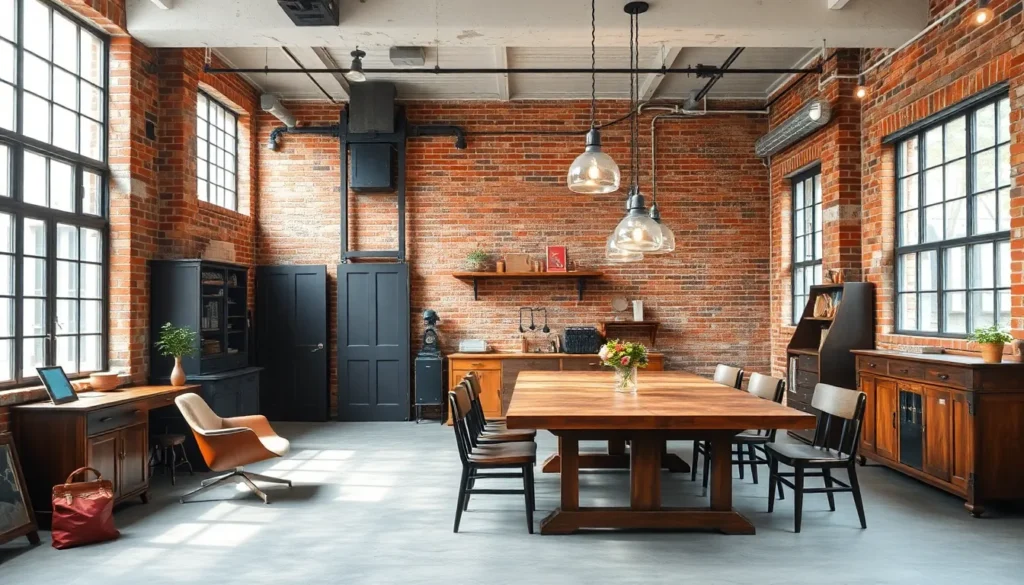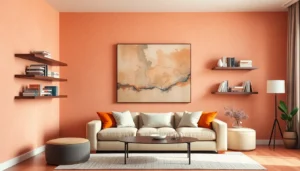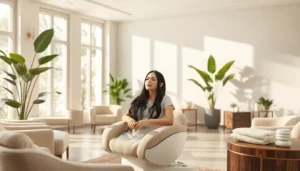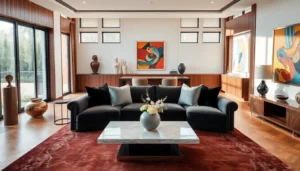Imagine walking into a space that feels like it’s straight out of a hipster’s dream—exposed brick walls, metal accents, and an air of effortless cool. Industrial interior design isn’t just a trend; it’s a lifestyle choice that screams creativity and innovation. Whether it’s a cozy loft or an open office, this style invites a unique blend of ruggedness and sophistication that can make anyone feel inspired.
But don’t worry, you don’t need to convert an old factory to achieve this look. With a few clever ideas and a dash of imagination, anyone can transform their space into an industrial haven. From vintage furniture to clever lighting solutions, the possibilities are endless. So grab your hard hat and get ready to dive into the world of industrial design—where every corner has a story and every piece adds character.
Table of Contents
ToggleOverview of Industrial Interior Design
Industrial interior design combines raw elements with an artistic touch, creating spaces that feel both edgy and inviting. Characteristic features include exposed brick, steel beams, and concrete floors, reflecting a sense of history and utility. This style resonates with individuals who favor a minimalist yet functional aesthetic, prioritizing character over excessive decoration.
Spaces designed in this manner often showcase a mix of vintage and modern elements. Mixing old wooden furniture with sleek metal accents enhances the industrial feel, providing unique contrast. Lighting plays an essential role as well; pendant lights and Edison bulbs can inject warmth into a predominantly cold environment, making spaces feel more intimate.
Artwork and decor serve as vital components to an industrial theme. Choosing oversized art pieces or sculpture can draw the eye and serve as conversation starters. Incorporating plants introduces a softer touch, providing color and life amidst the harder materials typically used in industrial settings.
Another popular choice within industrial design involves open floor plans. This approach fosters a sense of spaciousness, allowing for flexible arrangements and the inclusion of multifunctional furniture. In addition, large windows maximize natural light, accentuating the architectural details that define the space.
Ultimately, creating an industrial haven requires creativity and vision. Balancing rugged materials with sophisticated design elements highlights the unique personality of the space. Achieving this style involves thoughtful combinations of textures, colors, and furnishings, transforming even the simplest areas into unique reflections of personal taste.
Key Elements of Industrial Design
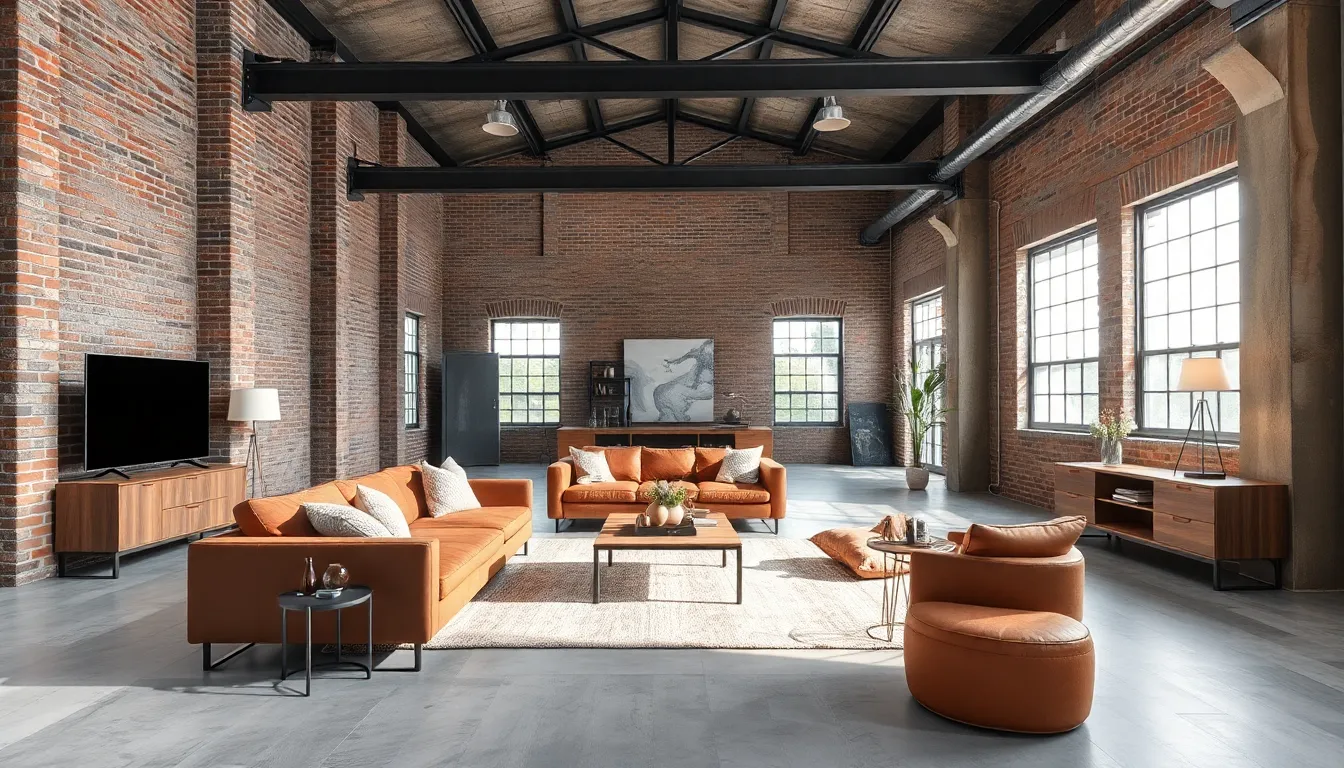
Industrial design showcases a unique blending of raw beauty and functionality. It prioritizes elements that reflect an urban lifestyle with character and history.
Materials and Textures
Exposed brick walls create a striking visual impact and provide warmth. Steel beams contribute to the structural integrity while offering a sleek aesthetic. Concrete floors deliver durability along with a minimalist vibe that enhances the overall design. Natural wood accents introduce an organic touch, softening the industrial feel. Glass elements allow light to flow through while maintaining an open, airy environment. Combining these diverse materials results in a balanced look that elevates industrial spaces and reinforces their unique charm.
Color Palettes
Neutral color schemes dominate industrial design, incorporating shades of gray, black, and white. These tones serve as a backdrop, allowing accent pieces to stand out. Rich earth tones, such as deep browns and burnt oranges, enhance warmth amidst cooler materials. Bold colors may be introduced via furniture or artwork, providing focal points that invigorate the space. Ultimately, a cohesive color palette strengthens the rugged sophistication typical of industrial interiors. Exploring variations creates depth and maintains visual interest.
Furniture and Decor Ideas
Industrial interior design thrives on unique furniture and decor choices that reflect authenticity and character. By incorporating various elements, one can create a truly captivating space.
Vintage and Upcycled Furniture
Vintage furniture creates a timeless appeal, adding character to industrial spaces. Pieces like mid-century chairs or old wooden tables often bring warmth and history. Upcycled items, such as repurposed crates or metal barrels, serve as functional decor while blending with the industrial theme. Each furniture selection enhances the raw charm, supporting sustainability efforts while maintaining style. Mixing different materials with vintage finds can create eye-catching contrasts that spark interest. Selecting items with unique stories adds depth to the overall design, showcasing personality and taste.
Lighting Choices
Lighting plays a crucial role in industrial interior design, influencing mood and ambiance. Industrial-style fixtures, such as pendant lights or Edison bulbs, deliver a nostalgic feel while providing effective illumination. The use of large floor lamps complements high ceilings, filling spaces with warmth and character. Combining various light sources, including wall sconces and table lamps, creates flexibility in lighting arrangements. Additionally, using dimmers can enhance the atmosphere, allowing for adjustments based on activity. Well-chosen lighting fixtures can transform raw spaces into inviting environments, emphasizing the unique features of industrial design.
Tips for Creating an Industrial Space
Creating an industrial space involves thoughtful planning and an eye for detail. Consider these practical suggestions to enhance the design.
Maximizing Space and Layout
Open floor plans define industrial design by promoting spaciousness. Incorporate multifunctional furniture to maximize utility. In a studio apartment, using a large table as a workspace and dining area saves space effectively. Arrange seating in a way that encourages interaction, creating an inviting atmosphere. Large windows not only fill the area with natural light but also visually expand the space. Use mirrors strategically to give an illusion of depth.
Incorporating Modern Touches
Modern elements enhance the industrial aesthetic. Choose minimalist furniture with sleek lines to juxtapose raw materials. Incorporate contemporary artwork that resonates with the industrial theme, providing a focal point. Lighting plays a pivotal role; opt for modern fixtures that complement vintage styles, like unpolished metal finishes. Utilize bold accent colors to draw attention without overwhelming the rustic backdrop. Integrate technology subtly to ensure it doesn’t detract from the overall design, maintaining the fusion of past and present.
Embracing industrial interior design offers a unique opportunity to blend raw materials with artistic flair. This style invites creativity and innovation into living spaces, allowing individuals to express their personal tastes. By incorporating elements like vintage furniture and striking lighting, anyone can transform a space into an industrial haven that resonates with character.
The key lies in balancing rugged aesthetics with modern functionality. Thoughtful planning and a keen eye for detail can elevate the design, ensuring it remains inviting and practical. With the right mix of textures colors and furnishings, achieving an industrial look becomes not just a possibility but an exciting journey toward creating a distinctive environment.
